Building a Collection #28
The Well-Tempered Clavier (Das wohltemperierte Klavier)
BWV 846–893
By Johann Sebastian Bach
_______________________________
“Music is an agreeable harmony for the honor of God and the permissible delights of the soul.”
― Johann Sebastian Bach
Hello to all readers, and welcome back to Building a Classical Music Collection and to #28 in our current series Building a Collection, where we will eventually cover the top 250 classical works of all-time.
Coming in at #28 is Johann Sebastian Bach’s The Well-Tempered Clavier which consists of two sets of preludes and fugues in all 24 major and minor keys for keyboard. Originally composed as studies and something to pass the time for skilled keyboardists, the complete work has gone on to become one of the most famous piano works in history.
Johann Sebastian Bach
There is a tremendous amount of biographical information available on Johann Sebastian Bach online and in print. For some general information, I refer you to my post from June 19, 2022 which contains more information about Bach the man and composer. Here is the link to that post:
A biography of Bach published in 2015 titled Bach: Music in the Castle of Heaven authored by acclaimed English conductor John Eliot Gardiner has garnered many positive reviews if you want to dive deeper.
The Well-Tempered Clavier
In Bach’s time, the word clavier referred to a variety of stringed keyboard instruments, most typically the harpsichord or clavichord, but not excluding the organ, even though it is not a stringed keyboard.
In Bach’s words, The Well-Tempered Clavier was written “for the profit and use of musical youth desirous of learning, and especially for the pastime of those already skilled in this study.” Today we refer to The Well-Tempered Clavier, Book 1 (WTC 1) and The Well-Tempered Clavier, Book 2 (WTC 2), and sometimes together the complete work is simply called the “48” since there are two books with 24 preludes and fugues in each.
Since each book takes us through all 24 major and minor keys, the first pair is in C major, the second in C minor, the third in C # major, the fourth in C # minor, etc. The pattern continues to rise until every key has been used, finishing with a B minor fugue. The first book was composed by Bach in 1722 when he was working in Köthen, and the second book was not composed until 20 years later in 1742 while he was in Leipzig. Bach also recycled some material from earlier works which was not uncommon at the time. While composers before and during Bach’s lifetime had worked on similar ideas of using successive keys for various instruments, Bach was the first to create a fully realized collection using all of the keys.
The first impression of the words "well-tempered” in the title may bring forth images of a very well-behaved keyboard, or at least one that maintains an even keel. In a sense that is exactly what it means, as “well-tempered” refers to the tuning desired or needed for the keyboard. Without getting too deep into the weeds about tuning, it is believed Bach’s meaning was that the keyboard needed to be tuned in such a way that the piece would work equally well in all keys, something that was a rare feat to achieve in Bach’s time. The belief developed that Bach intended for what is known as “equal temperament”, in which the octave is divided into 12 semitones of exactly equal intervals, or in other words each tone is the same distance from the one before and the one after. Further research has concluded that Bach may not have actually intended equal temperament, and that the piece can be played very successfully with subtly unequal temperaments. However, on that point there is widespread disagreement as to which key(s) should receive unequal treatment. We know Bach himself was quite demanding about the tuning he used for his own performances, and it has been proposed that he used different tunings for different keyboards, venues, or works. Some musicologists insist that Bach did not mean strictly “equal” temperament, but rather merely similar temperament. These are all academic concerns.
In any case we know that Beethoven greatly admired Bach's work, and by the age of eleven he was able to play the entirety of both books. He even went on to arrange BWV 867 for string quintet. The well-known conductor, pianist, and composer Hans von Bülow famously called The Well-Tempered Clavier the “Old Testament” of music (and the Beethoven piano sonatas were the “New Testament”). Of course Bach’s work also inspired other composers to write similarly structured piano works, most notably Chopin and Shostakovich.
But the idea of using all the keys for preludes and fugues is not enough to make this work great. It is the music itself with Bach’s seemingly inexhaustible inventiveness that makes it special, memorable, and great. Bach is able to vary his approach enough with each key and with each set of prelude and fugue that they each become their own miniature masterpiece. We hear joy, sorrow, exuberance, pain, darkness, light, and a range of other emotions. We hear dancing, singing, crying, lamenting, and a range of rhythmic contrasts. The music leaves enough room for many different interpretations using more or less staccato, legato, and rubato. Tempos from various pianists vary widely, but there are many effective tempos depending on phrasing. Some are more romantic sounding, some are more baroque sounding, some are a mix of different styles.
The accomplished pianist and Bach specialist Angela Hewitt comments, “It is an inexhaustible treasure trove of the greatest possible music, combining contrapuntal wizardry with Bach’s immense gift for expressing human emotion in all its forms. Bach amazes us by absolutely never running out of steam. In The Well-Tempered Clavier, we find a piece to suit every mood and every occasion.”
If you start by listening to Book I, the first piece is Prelude No. 1 in C major. If you think you have heard it before it is because you probably have. More than 100 years after Bach composed it, the French composer Charles Gounod superimposed his Latin version of Ave Maria on top of Bach’s melody creating the ever-popular Bach/Gounod Ave Maria. Pop star Amy Grant began her 1982 contemporary Christian pop song Sing Your Praise to the Lord with the Fugue No. 2 in C minor.
Recordings
Bach probably intended The Well-Tempered Clavier to be played on cembalo, or harpsichord, but today it is often played on piano and even organ. Different instruments have different advantages in terms of tonal qualities, and even within the same instrument category there are quite different sounding instruments. Most modern recordings are on piano, but there are also a fair number on harpsichord. One isn’t better than the other, it is really down to preference.
It should be noted that when listening to various recordings there are many diverse approaches that are equally effective, and so there is no consensus on the style that works best. As listeners we sometimes hear something we enjoy and insist that anything which varies from that is not as good. I have certainly been guilty of such discrimination. This mentality should be avoided with Bach, and I encourage you to have an open mind when listening to different recordings. A little patience will bring many rewards.
One more thought on listening to The Well-Tempered Clavier: you may not want to listen to all of it in one sitting. Besides being quite long when you combine both books together, the ear becomes weary after a while and I find that in order to fully appreciate Bach’s writing I need to actually concentrate on what I am hearing. Of course you can put the music on in the background, but doing so tends to make the music homogenize and begin to sound the same. My recommendation is to take the preludes and fugues in bite size pieces, perhaps listen to a few at a time, and then take a break, then go back and listen to a few more, etc.
I have chosen two recordings below which I believe are essential, but please note my own bias for rather “old-fashioned” Bach which tends to be more expressive, uses a wider span of tempi and rubato, has more dynamic contrasts, and in general reflects more personality and emotion from the performer. I like Bach which is less clinical, dry, and academic. Choosing two recordings of this work that are “essential” is a profoundly subjective exercise, as there are scores of excellent recordings available which span a wide range of styles and techniques. Nevertheless, the two I have chosen below remain my favorites.
The Essential Recordings
The first essential recording for The Well-Tempered Clavier (Books I & II) is from legendary Russian pianist Sviatoslav Richter (1915 - 1997). Recorded by RCA in Salzburg, Austria in 1970, Richter’s set is for me further evidence of Richter’s greatness in repertoire spanning centuries from Bach to Beethoven, and further to Tchaikovsky and Rachmaninoff. Rumor has it Richter learned all of Book 2 by heart in less than a month! His account is heartfelt, ethereal, and flowing without being overly sentimental. There is a warmth of expression, and Richter unifies the preludes and fugues masterfully. Speeds are fleet but never rushed, and Richter takes his time when needed. The voices of different lines in the music are clear, and textures run deep and wide. We notice the focus on clarity too even if the sound leans toward the reverberant side, and there is a bit of a “dampening” effect in the sound, but I don’t find it bothersome. The opposite of routine and overcalculation, Richter’s Bach is convincing and strikes an ideal balance between academic precision and expressivity. This is an inspired and sublime recording.
The other essential recording may be controversial for some, but I am a huge fan of Austrian piano legend Friedrich Gulda (1930 - 2000), and he recorded the complete Well-Tempered Clavier in 1972-1973 for the MPS label, also available on other labels over the years, including on Philips. I say controversial because Gulda was an “outside the box” pianist and composer, and his version may not appeal to everyone because he was known to put his own personal stamp on music and he does so here as well. The sound is excellent with the piano rather close, but still realistic. Gulda is searching in his approach, but always technically masterful. The qualities of grace and poise are in abundance, as well as delicacy and subtlety. Gulda allows the piano to sing, and the melody to flow naturally. I believe here Gulda balances his individual approach with a lot of respect for Bach. Contrasting dynamics are used well, the structure is built intelligently, and Gulda uses ornamentation more liberally than most. Gulda gives the music personality, something that is missing in many other accounts. He also sounds like he is having fun, and infuses many movements with spontaneity and life. The control is there, but also the joy. I love this recording.
Other recommended recordings on piano
Eccentric Canadian pianist Glenn Gould (1932 - 1982) is most well-known for his groundbreaking recordings of Bach’s music. Some readers may consider it heresy that I haven’t made Gould’s recording of The Well-Tempered Clavier essential, and I will explain. There is no doubt Gould’s version is highly recommended. Gould recorded the work in New York between 1962 and 1965 for Columbia (now Sony), and technically it is extremely impressive. No pianist has played Bach like Gould, and his individual approach is refreshing and gripping. He varies tempos fairly widely, taking some movements quite fast and slowing way down for others. The clarity is there for sure, and Gould was known for favoring a dry piano sound and not lingering on phrases. He communicates a clear vision in a direct and uncompromising way, and eschews any hint of romanticism. As with his first recording of the Goldberg Variations, I find myself admiring Gould rather than loving him. There is not much space for the music to breathe, and I don’t hear Gould bringing much in the way of emotional insights (but again, this may be my own bias). I find him rather detached, with not enough emotional contrast built in. Still, no Bach collection would be complete without this recording. My main reason for not putting this in the essential category is that Gould’s humming and grunting in the background can be heard throughout nearly the entire recording, and I find it annoying and distracting. It may not bother other listeners.
The Hungarian pianist Sir Andras Schiff (b. 1953) has recorded The Well-Tempered Clavier twice, the first during his younger days for Decca and then in 2011 for the ECM label in Lugano, Switzerland. It is the second traversal that makes the recommended list. Schiff is a brilliant Bach interpreter, he is masterful with a sensitive touch, but is not overly sentimental. Schiff has a relatively dry sound, and he uses very little pedal. I enjoy the purity of Schiff’s playing, the different lines in the music come out wonderfully, and there is a peaceful and contemplative quality to this recording. Schiff is able to bring forth emotion when needed, but there are very few extremes here. Within his playing there is a good amount of imagination and color, but always in moderation. Book 2 is especially good, and even though Schiff lacks the depth of Richter or Gulda, this is still outstanding and highly recommended. The sound is exemplary, and crystal clear.
Canadian pianist Angela Hewitt (b. 1958) is best known for her Bach interpretations, and she has also recorded The Well-Tempered Clavier twice, both on the Hyperion label. It is her second recording from 2008 that is highly recommended. Hewitt has a light touch, and brings an elegance and stylish warmth to this music. Hewitt, somewhat similar to Schiff, is controlled and avoids extremes. Dynamics and phrasing are well done, and Hewitt uses very subtle ornamentations. She pays a lot of attention to the rhythms and structure, and her precision is a constant joy. Hewitt creates a nice lilt to the more dance-like numbers, and the overall piano sound is lean and close up. Hewitt’s phrasing of melodies is consistently appealing, and where she sometimes uses a more legato style (where notes are smooth and connected), more often than not she uses a more staccato style (where notes are shorter and more separated from each other). I enjoy Hewitt’s wit and grace, and her tone is never less than beautiful. At times I yearned for more differentiation in dynamics and tempi, but that is a small personal quibble. Hewitt is an excellent choice.
35 year-old German-Iranian pianist Schaghajegh Nosrati (b. 1989) released her recording of The Well-Tempered Clavier, Book I in 2022 on the Deutsche Grammophon label, and what a discovery it is! Some of the younger generation of pianists sound the same in this work, and don’t really have an individual voice. Not so with Nosrati. She has a wonderful touch, delicate and sensitive to the textures as well as the light and dark moods. Nothing is routine here, and there is plenty of imagination and rhythmic alertness. Even with her fine touch, there is no lack of weight in tone either. One of her teachers is Andras Schiff, and that is evident in her precision and clarity, but Nosrati brings a wider range of emotion and depth than Schiff. There is joy, vitality, and even exuberance in her playing. Again, like Richter and Gulda, we hear the artist’s personality and I really enjoy that aspect. Lines are sharply defined, and the flow is infectious. Nosrati is consistently enjoyable on this recording, and it fully deserves to be recommended.
I am very fond of Polish pianist Piotr Anderszewski (b. 1969), and even though he hasn’t recorded the complete set, his excerpts of Book 2 recording from 2021 on Warner Classics is so good it is a strong recommendation. Even though I wish he had recorded the entire set, what he did record is spectacular. I would say Anderszewski has a somewhat more romantic approach, uses some pedal although not heavily, and is adept at bringing out the voices and contrasts in each prelude and fugue. There is a mellowness in his playing, but also an elegance and an admirable clarity. Anderszewski wants to bring out the lyrical quality to the preludes especially, and he is very thoughtful in his choice of tempi and dynamics. The way he scaffolds the various themes and voices is a joy to hear. In the quicker and more demonstrative movements Anderszewski is not as crisp and fleet as Schiff or Hewitt, but his warmth and clarity are all the more attractive for their own distinctiveness.
The final recommendation in the piano category is from British pianist and musicologist Peter Hill (b. 1948). Hill has recorded the entire set on Delphian records, Book I was released in 2013 and Book II in 2012. In addition to the scholarly authority Hill brings to this music (he is a leading Bach scholar), he also brings warmth, clarity, and new insights. The way Hill communicates the music is so human, intelligent, and disarming, I just couldn’t stop listening to the shimmering sound he creates. This is not fiery Bach, but rather noble and elegant. Hill is a master of Bach’s counterpoint writing, but what I find is also a spiritual component which is rare. Hill is quoted as saying, “I see Bach as a linear composer taking the listener on a journey.” He is not flashy, and does not draw attention to himself. Rather, he uses the music to make his points, but also he is not afraid to sustain notes where it draws out more drama and feeling. On the other hand, Hill is proportionally quicker and more rhythmically alive where called for. Overall tempi are a bit slower than others on this list, but there is something about Hill’s understated approach that feels absolutely right. The sound is good, if not quite at the level enjoyed by Schiff, Nosrati, and Hewitt.
Other very good recordings on piano
Other recordings that didn’t quite make the list, but have merit include those by:
Edwin Fischer (EMI, 1933-1936, sound is very limiting)
Rosalyn Tureck (Decca, 1950s, background hiss is distracting, I have not heard her BBC Legends version from 1975)
Walter Gieseking (DG, 1950)
Mieczysław Horszowski (Vanguard and other labelsk, 1978)
Roger Woodward (Celestial Harmonies, 2008)
Evelyne Crochet (M & A, 2008)
Zhu Xiao-Mei (Mirare, 2007-2009)
Maurizio Pollini (DG 2009, Book I)
Abdel Rahman El Bacha (Triton, 2010)
Recommended recordings on harpsichord/cembalo/clavichord
German harpsichordist Christine Schornsheim recorded the set for the Capriccio label in 2010, and it is one of the most satisfying overall accounts on record. The intimate acoustic lends itself to great detail, but there is warmth and resonance as well. Schornsheim has a sense of proportion, rhythmic vitality (not always easy on the instrument), and a lovely flow. She uses some rubato, but only as needed, and she follows Bach’s own ornamentation indications. This is a joyful account, tastefully done, and nearly perfect technically. The faster runs are thrilling, voices are clear and consistent, and textures are varied as called for in the score. This is a persuasive harpsichord account, and very enjoyable overall.
Kenneth Gilbert’s 1985 account on Archiv (Decca) remains one of the top choices for a harpsichord version. Gilbert’s instrument is captured up close, and sound is very good early digital. The performance is inspired, spontaneous, and polished. Ornamentations are tasteful, speeds are moderate, and dynamics are balanced. Gilbert is not flashy, but remains true to the music. The recording has stood the test of time.
Finally I really enjoy German organist Helmut Walcha’s 1961 recording on Celestial Harmonies (variously issued on other labels). His experience as an organist is apparent on harpsichord as well, as he is exceptional at bringing out the different musical lines and voices. Walcha is direct and clear, avoiding ornamentation and using moderate to lively tempos. Walcha was blind before he had reached the age of 20, so he is playing entirely from memory. There is an emotional depth to his playing, and the harpsichord is captured very well.
Other very good recordings on harpsichord/cembalo/clavichord
Wanda Landowska (Profil, 1949)
Gustav Leonhardt (Harmonia Mundi, 1989)
Masaaki Suzuki (BIS, 1997/2009)
Pierre Hantai (Mirare, 2004)
Christophe Rousset (Aparte, 2015)
Trevor Pinnock (DG, 2021)
Well, that does it for this edition of Building a Collection. Thank you for your readership, and I sincerely hope you are enjoying our journey through some of the best pieces of music ever composed. Next time we will turn our attention to #29 on our list, Joseph Haydn’s thrilling choral work The Creation. See you then!
_________________________________
Notes:
All Music Guide to Classical Music: The Definitive Guide to Classical Music. Hal Leonard Corporation. 2005. p. 52. ISBN 0-87930-865-6.
Bach, Johann Sebastian; Novack, Saul (1983). The Well-Tempered Clavier: Books 1 and 2, complete. ISBN 978-0-486-24532-4.
Bach, J.S. (2004). Palmer, Willard A. (ed.). J.S. Bach: The Well-Tempered Clavier. Los Angeles, CA: Alfred Music. p. 4. ISBN 0-88284-831-3. Retrieved 10 May 2010 – via Google books.
Clements, Dominy. Review The Well-Tempered Clavier. Online at https://www.musicweb-international.com/classrev/2013/July13/Bach_WTC1_DCD34126.htm.
Clements, Dominy. Review The Well-Tempered Clavier. Christine Schornsheim. Online at musicweb-international.com.
David, Hans T.; Mendel, Arthur, eds. (1966). The Bach Reader (revised, with a supplement ed.). W.W. Norton. p. 261. ISBN 0-393-00259-4.
Daniel Heartz. Mozart, Haydn and Early Beethoven: 1781–1802, p. 678. W. W. Norton & Company, 2008. ISBN 978-0-393-28578-9.
McDade, David. Musicweb-international. November 10, 2022. Online at https://www.musicweb-international.com/classrev/2022/Nov/Bach-Book1-AVI8553509.htm.
https://www.nosrati-pianist.com/english/biography/.
Schwarm, Betsy. The Well-Tempered Clavier, BWV 846–893. Encyclopedia Britanica online at https://www.britannica.com/topic/The-Well-Tempered-Clavier-BWV-846-893.
Sealy, Mark. Das Wohltemperierte Klavier, BWV 846-893. 2015. Online at Classical.net.
Ueno, Azusa. Review: Bach – Well-Tempered Clavier, Book II (Excerpts) – Piotr Anderszewski. February 8, 2021. The Classic Review online at https://theclassicreview.com/album-reviews/review-bach-well-tempered-clavier-book-ii-excerpts-piotr-anderszewski/.
https://www.goodreads.com/author/quotes/115200.Johann_Sebastian_Bach


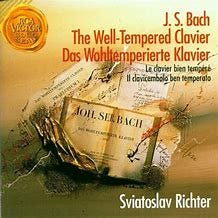
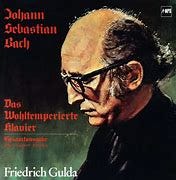
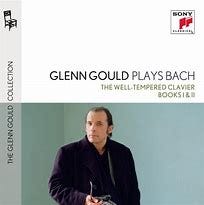
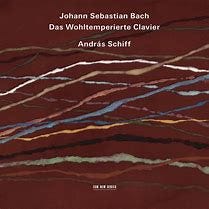

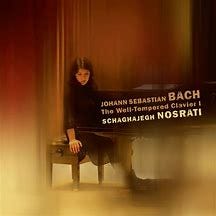
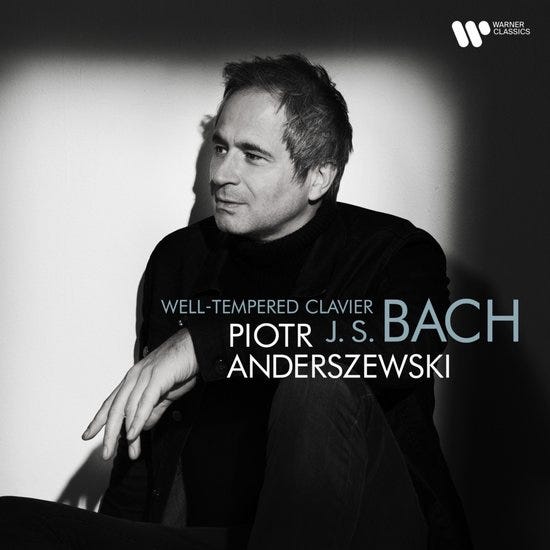
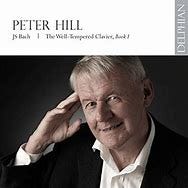
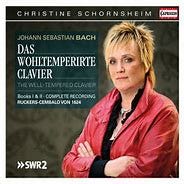
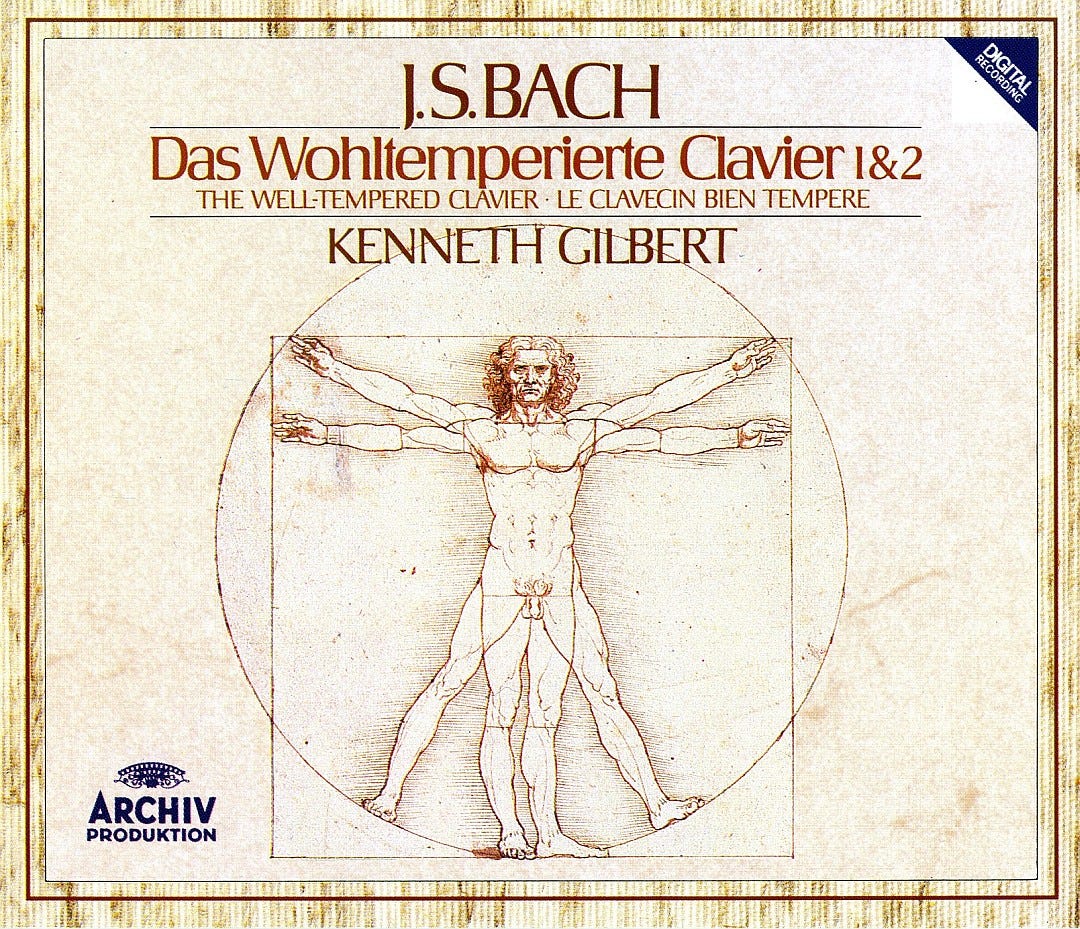
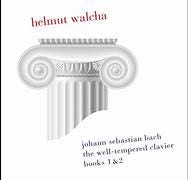
I wounder if you have come accross Richter's live recording from Innsbruck. I'm not a huge fan of Richter, and I never understood the enthusiasm about his Bach and his studio recording of the Great 48 for RCA, until I ran across that live recording. It's availble on streaming services, and I really like it. The difference in the overall time isn't huge (about 4:27 hours vs 4:12 for the live recording), but I find the live recording much more spontaneous and enjoyable.
lots of good recommendations here, I vote Gieseking and Schiff and can't wait to give Nosrati a spin... Some others I highly recommend:
Evelyne Crochet
https://music.apple.com/us/album/bach-j-s-well-tempered-clavier-the/457928117
Ewa Poblocka
https://music.apple.com/us/album/bach-das-wohltemperierte-klavier-i/1441796684
Edward Aldwell
https://music.apple.com/us/album/j-s-bach-the-well-tempered-clavier-book-i-preludes/83156612
Maria Yudina
[https://music.apple.com/us/album/мария-юдина-коллекция/1510087396](https://music.apple.com/us/album/%D0%BC%D0%B0%D1%80%D0%B8%D1%8F-%D1%8E%D0%B4%D0%B8%D0%BD%D0%B0-%D0%BA%D0%BE%D0%BB%D0%BB%D0%B5%D0%BA%D1%86%D0%B8%D1%8F/1510087396)